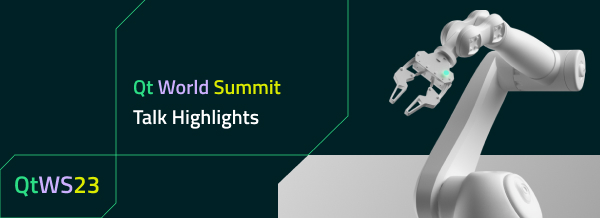Streamlining the DevOps Pipeline: Key Areas to Improve Software Development
May 16, 2024 by Nghi Dang | Comments

At the Qt World Summit 2023, Marko Klemetti, CTO of Eficode, delivered a speech on the future of software development, particularly in embedded development. He began the speech by quoting Martin Woodward of GitHub, stating, “Software development will change more in the next five years than it has in the last 40 years.” Klemetti highlighted the rapid evolution of software development and encouraged organizations to seek ways to improve their development pace and reduce complexity. To that end, Klemetti presented six areas to streamline the DevOps pipeline:
Agile feedback loops
The first area he discussed was agile feedback loops. This approach involves aligning streams with platforms as a service to build an organization as an application programming interface (API), reducing complexity, and making value streams smaller.
Continuous integration and continuous delivery
The second area was continuous integration and continuous delivery (CI/CD), which involves continuously integrating and delivering software and hardware components to ensure they meet the same maturity level before release. Klemetti emphasized that feedback loops and traceability are essential components of this process.
Continuous quality assurance with AI
The third area was continuous quality assurance (QA) with AI. Klemetti discussed how we could form the concept of QA even before a single line of code would be written or tested. He further expanded this area to creating testing farms, especially when looking at the platform teams and using digital twins when hardware is scarce.
Security shift left
The fourth area was the security shift left. This approach involves building security rules with the security or compliance team, automating as much as possible, and getting feedback as early as possible. This helps organizations avoid the cost of delay and other quality assurance-related factors.
Platform engineering
The fifth area was platform engineering, which Klemetti called “one of the cool kids on the block.” Platform engineering is a trend that aims to reduce the cognitive load of developers and provide valid information to the organization or developers. American Airlines and Adobe are investing in their platform engineering to allow developers to jump into new projects and, at the same time, have such platforms already in production.
Measuring success
Finally, the sixth area was measuring success. Klemetti suggested alternative metrics derived from DevOps Research and Assessment (DORA) metrics, including lead time for a release candidate, automated test coverage, modular dependencies ratio, and cost delays.
All in all, Klemetti emphasizes the importance of streamlining the development process, reducing complexity, and improving productivity. He discusses agile feedback loops, continuous integration and delivery, and creating self-organized teams to better reflect customer needs. The talk further advocates building the organization as an API to make the value streams smaller and less complex, with platform teams providing services through APIs.
Based on our customer insight, at Qt, we have also shared the prediction that by 2026, most software engineering organizations will establish platform teams and embrace the platform engineering trend as a response to the increasing complexity of modern software. Many of our customer, like Blue Ctrl with their X-CONNECT® platform, built entirely on the Qt Framework, is one such case of platform engineering. Qt acts as middleware, providing the level of abstraction and standardization needed to integrate different systems, for different modules to talk to each other, and for different software stacks to live on the same codebase. The platform strategy, embodying the concepts of standardization and re-usability, significantly positively affects the production workflow, quality, and efficiency.
Listen to Klemetti’s full talk here:
👉 Check out Qt’s customer cases to learn more about the platform strategy:
Parker Hannifin | Built with Qt
👉 Explore further how to boost productivity with Platform Engineering.
Blog Topics:
Comments
Subscribe to our newsletter
Subscribe Newsletter
Try Qt 6.10 Now!
Download the latest release here: www.qt.io/download.
Qt 6.10 is now available, with new features and improvements for application developers and device creators.
We're Hiring
Check out all our open positions here and follow us on Instagram to see what it's like to be #QtPeople.


